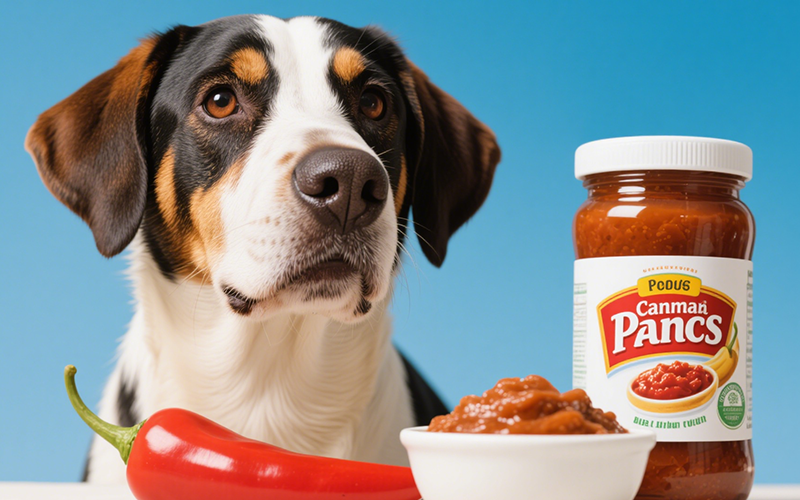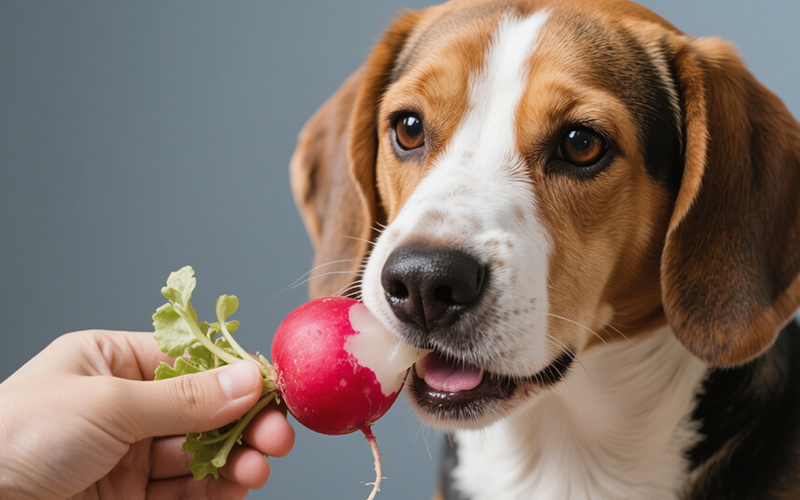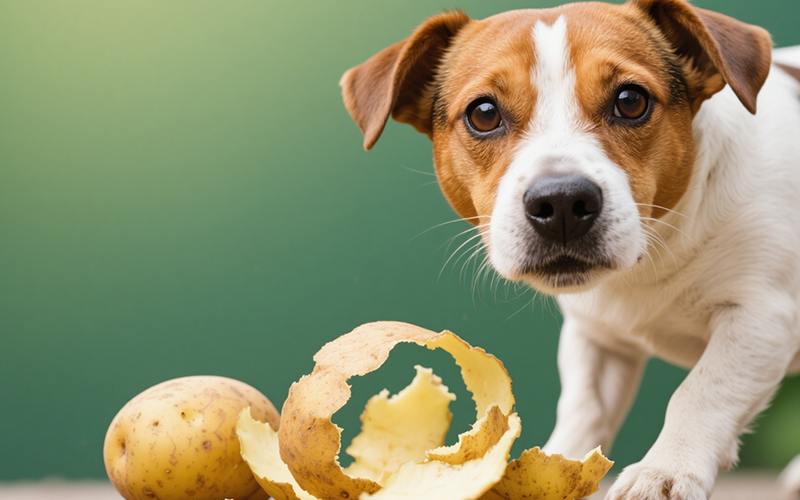Can Dogs Eat Chocolate? Understanding the Risks and What You Need to Know
- 24 Feb 2025 15:15
As a dog owner, you may have heard that chocolate is dangerous for dogs, but just how true is this? Can dogs eat chocolate without harm, or should it always be avoided? The short answer is that dogs should never eat chocolate. Chocolate contains substances that can be toxic to dogs, and consuming even a small amount can lead to serious health issues. In this article, we’ll explore why chocolate is dangerous for dogs, the potential symptoms of chocolate toxicity, and what to do if your dog accidentally eats chocolate.

Why Is Chocolate Toxic to Dogs?
The main reason chocolate is harmful to dogs is due to two substances it contains: theobromine and caffeine. Both of these compounds are stimulants that can cause a variety of health problems in dogs. While humans can metabolize these substances relatively easily, dogs process them much more slowly, leading to toxic levels building up in their system.
Theobromine: This is the primary toxin in chocolate, and dogs are particularly sensitive to it. Theobromine can affect the heart, central nervous system, and kidneys, leading to symptoms of toxicity.
Caffeine: Found in smaller amounts in chocolate, caffeine can also cause similar issues, including increased heart rate and hyperactivity.
What Happens If Dogs Eat Chocolate?
When a dog eats chocolate, the theobromine and caffeine can have several negative effects on their body. The severity of these effects depends on the type of chocolate, the amount consumed, and the size of the dog. For example, dark chocolate contains much higher levels of theobromine compared to milk chocolate, making it more dangerous.
Symptoms of Chocolate Toxicity in Dogs
If your dog eats chocolate, symptoms of toxicity can appear within a few hours. Common signs to look out for include:
Restlessness or hyperactivity
Vomiting or diarrhea
Increased heart rate or abnormal heart rhythms
Tremors or seizures
Increased thirst or urination
Panting or rapid breathing
Muscle rigidity or stiffness
In severe cases, coma or even death (particularly with large amounts of dark chocolate or cocoa)
How Much Chocolate Is Toxic to Dogs?
The level of toxicity depends on several factors, including the type of chocolate and the dog’s size. Generally, the darker the chocolate, the more toxic it is. Here’s a rough guide to the amount of chocolate that could cause toxicity:
Milk chocolate: Around 1 ounce of milk chocolate per pound of body weight can cause symptoms of toxicity in dogs.
Dark chocolate: Dark chocolate is far more dangerous, with as little as 0.1 ounces of dark chocolate per pound of body weight being potentially lethal.
Baking chocolate: This is one of the most toxic forms of chocolate, and even small amounts can cause severe toxicity.
For example, a 10-pound dog could be seriously affected by eating just a small piece of dark chocolate or baking chocolate, while the same amount of milk chocolate might cause only mild symptoms.
What Should You Do If Your Dog Eats Chocolate?
If you suspect that your dog has eaten chocolate, it’s essential to take immediate action:
Call Your Veterinarian or an Emergency Pet Poison Hotline
The first thing you should do is contact your veterinarian or an emergency pet poison hotline. Time is critical when it comes to chocolate toxicity, and they can provide guidance based on your dog’s size, the type of chocolate consumed, and the amount.Induce Vomiting (only under veterinary guidance)
In some cases, your veterinarian may instruct you to induce vomiting if the chocolate was eaten recently. This can help prevent further absorption of the toxins into your dog’s system. Never attempt to induce vomiting without professional advice, as it can be dangerous in some situations.Monitor Your Dog’s Symptoms
If you can’t reach a veterinarian immediately, closely monitor your dog’s behavior for any signs of toxicity. Keep them calm and comfortable while you wait for guidance.Provide Information
When you speak to your veterinarian, try to provide as much information as possible, including:The type of chocolate (milk, dark, baking, etc.)
The amount of chocolate consumed
Your dog’s size and breed
How to Prevent Chocolate Toxicity in Dogs
The best way to protect your dog from chocolate toxicity is to prevent access to chocolate in the first place. Here are some tips:
Keep chocolate out of reach: Store chocolate in a safe place where your dog can’t access it, such as in a pantry or a high cabinet.
Educate your family and friends: Make sure that everyone in your household knows not to feed chocolate to your dog, and be mindful during holidays like Halloween, Christmas, and Easter when chocolate treats are often around.
Be cautious when baking: If you’re baking with chocolate, make sure to store ingredients like cocoa powder and baking chocolate securely out of reach of pets.
What About Alternatives to Chocolate for Dogs?
If your dog has a sweet tooth, there are safe, chocolate-free alternatives that you can offer. For example:
Carob: This is a dog-safe, chocolate-like substitute made from the pod of the carob tree. It’s free from theobromine and caffeine, making it a safer option for dogs.
Dog-friendly treats: Many pet stores offer special dog treats that mimic the taste of chocolate but are formulated to be safe for dogs.
Should You Use PettureX for Your Dog’s Health?
If you’re ever in doubt about what foods are safe for your dog or you suspect they’ve eaten something harmful, consider using PettureX for 24/7 online consultations. PettureX can provide professional guidance on pet health concerns, helping you make informed decisions and ensuring your dog’s well-being.
Conclusion: Can Dogs Eat Chocolate?
In conclusion, dogs should never eat chocolate. Even small amounts can be harmful and cause serious health problems due to the presence of theobromine and caffeine. Dark chocolate, baking chocolate, and cocoa are especially dangerous, so always keep these items out of reach of your pets. If your dog eats chocolate, act quickly and contact a veterinarian for advice.
For any concerns about your dog’s health or diet, don’t hesitate to use PettureX for 24/7 online consultations with pet health professionals. They can offer expert advice and help you ensure your pet stays safe and healthy.
Related

Raspberries for Rover? A Vet's Guide to This Berry Good Treat for Dogs
- 23 Apr 2025
Ranch Dressing Dilemma: Can Dogs Safely Indulge? A Deep Dive into Why It's a Bad Idea
- 23 Apr 2025
Radish Bites for Your Buddy? A Vet-Reviewed Guide on Whether Dogs Can Eat Radishes
- 22 Apr 2025
Potato Peels for Pooches? Unpeeling the Risks and Facts for Dog Owners
- 22 Apr 2025
Crunchy Curiosity: Can Dogs Safely Snack on Pork Rinds? A Deep Dive
- 21 Apr 2025
Pomegranate Seeds and Pooches: A Deep Dive into Whether Dogs Can Safely Indulge
- 21 Apr 2025
Can Dogs Eat Peaches? Vet Explains Benefits, Cyanide Risks & Safe Serving
- 16 Apr 2025
Can Dogs Eat Mulberries? Vet Explains Safety, Benefits & Potential Risks
- 16 Apr 2025
Can Dogs Eat Mozzarella? Vet Explains the Cheesy Truth (Risks & Benefits)
- 16 Apr 2025
Can Dogs Eat Mango Skin? Vet Explains Why It's a Risky Chew!
- 16 Apr 2025
